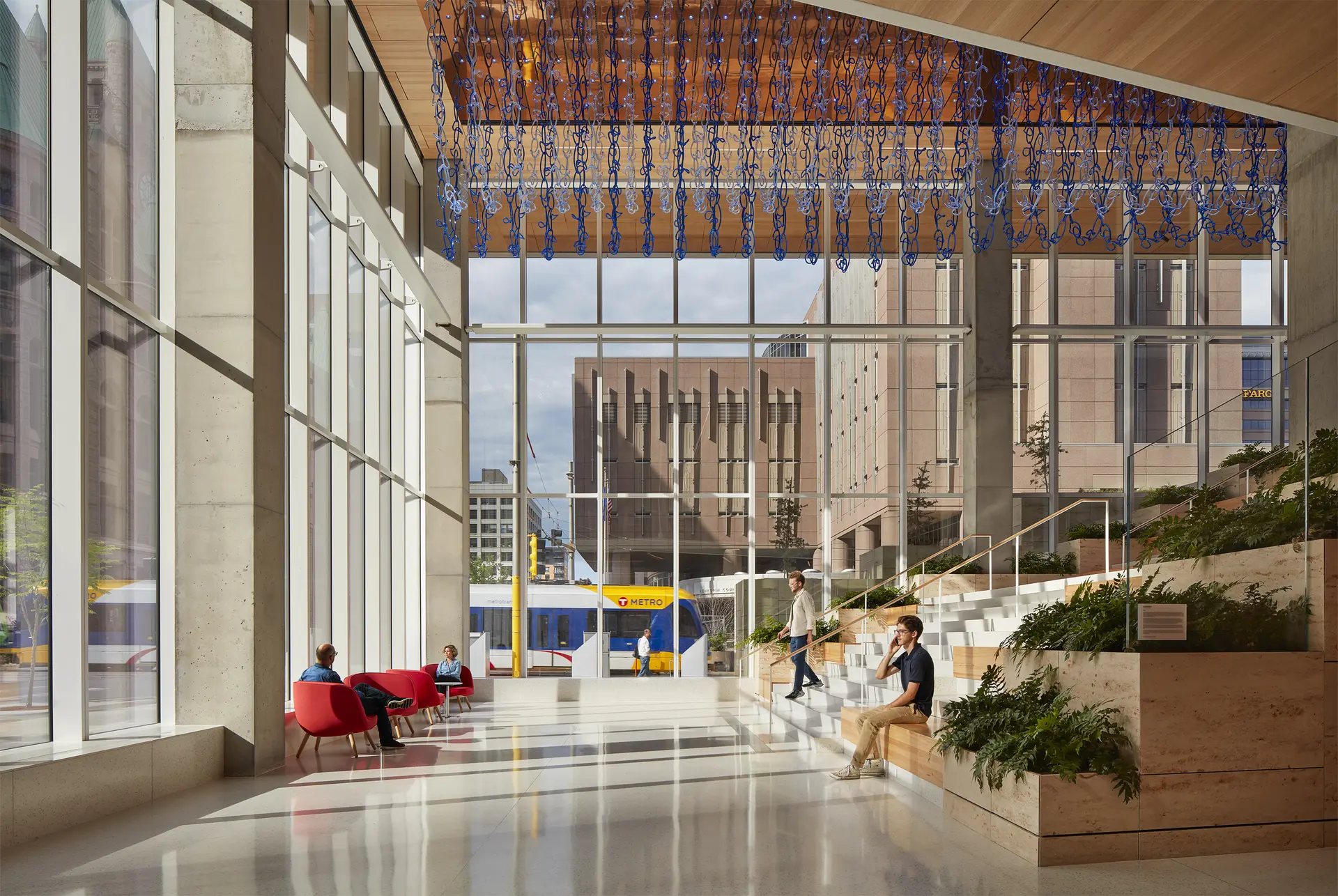How to design community and trust

Civic buildings, from grand city halls to small community centers, are natural symbols for democracy. So how do you ensure that they foster community and trust?
In the past, civic buildings were solid structures, designed to affirm the power and importance of municipal authority. Heavy doors, soaring atria, solid materials (stone, brick, oak): all were tools to impart a sense of gravity. But the line between gravity and menace can be thin. It’s a balance that’s risky to take on when designing, and never more so than now. As people increasingly search for themselves in their institutions, openness, vitality, and diversity are far more important than gravity or seriousness. So how do you show it?
1. Blur the Boundaries
Civic buildings should never feel closed or exclusive. Just as heft and scale were used to impress in the past, the kit of parts we use to design civic spaces today should facilitate openness. Can the ground level open onto the street in warm weather? Can stairs be designed not just as circulation but as galleries for community events? Can security checkpoints or reception desks be moved to individual departments, rather than guarding the entry? In our Minneapolis Public Service Building, the ground level is left open and un-policed, a huge gesture of trust and civic ownership by the city. By keeping it open, the public plaza across the street dissolves into the building itself, opening up the potential for any range of civic activity.
Create a space that can host yoga in the morning, ball games on a big screen, work lunches, holiday markets, play dates, civic gatherings and other events that will make it a natural meeting point for the public. For the new civic center in Etobicoke, Toronto, we created a cascade of smaller built forms and spaces in a myriad of scales to make the building address the civic square and feel accessible.
2. Active Democracy is Open Democracy
The architecture of civic centers – and city halls in particular – reflect the democracy they represent. To reflect and honor this, civic centers as well as city halls must be open, inviting and transparent. Use glass sections to ensure the citizens’ as well as the politicians’ insight into each other’s everyday lives, and send the citizens straight into the heart of the building, when they’re contacting the municipality – do not let them enter a front desk in the foyer only. Make sure the administrative functions are visible.
In Kiruna City Hall, visitors enter directly to the heart of the structure, with administrative and office spaces creating a ring around the open center. The truly public space is dispersed throughout the building to be entwined with private workspaces; on the way to the art gallery, visitors can sneak a glimpse of their councilors in action in the chamber. A single, shared café at the ground level is both easy and a civic gesture – the perfect place to break bread.
3. Give Community Space
Today’s civic structures should feel less like the grand campuses of the past and more like local community centers. They should be places where culture, business, health, education, sport and, naturally, administration fuse. Multiple functions ensure life and activity throughout the day and the week – even (or perhaps especially) after hours.
The Etobicoke Civic Centre combines a community recreation center, swimming facilities, a public library, offices and childcare center with the city council hall. Not only does this keep the building busy round the clock, but it makes the building more approachable. If every citizen can feel the space is open and welcoming, the free and equal democracy we stand for becomes more possible.



